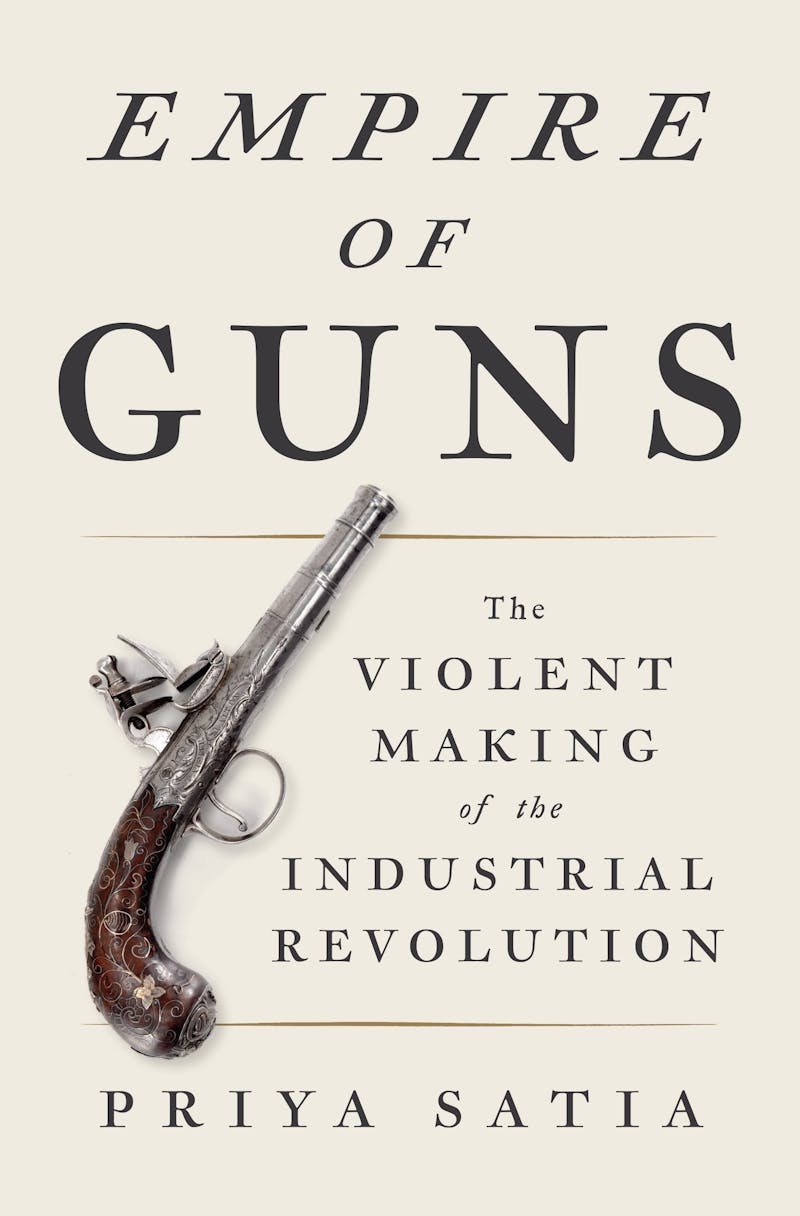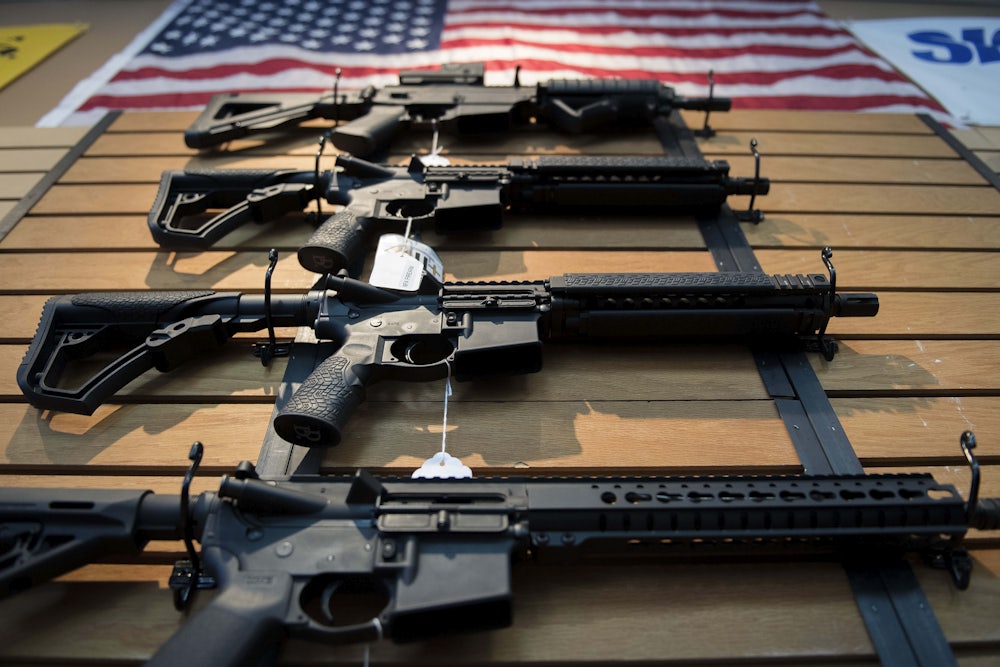What would life today look like without the Industrial Revolution? Mechanizing production, speeding communication, and transforming a rural, decentralized workforce into an urban, class-organized consumer base, the Industrial Revolution gave us the very idea of modernity, the slippery concept of a world in which humanity, liberated from the constraints imposed by nature, could advance to faster, more interconnected, ever-more quantifiable ways of life than before. Explaining this transformation is thus one of the great preoccupations of global history. Why the shift occurred, why at that point, why in Europe and why specifically in England, are questions relevant not just to historical debates but to geopolitics, economic growth, and the rules governing the rise and fall of civilizations.

A classic narrative, one of the more flattering to the early industrializers, holds that European institutions and culture offered unusually fertile ground for new ideas and incentives for their application. Stability and the liberal state protected free thought and private property: It wasn’t long before intelligent individuals figured out how to use the former to acquire more of the latter.
Skeptics have challenged this story, however, almost since its first telling. As alternative deciding factors, scholars have offered everything from religion to natural resources, high labor prices to imperialism. A comically large number of theories hinge on sheep. Karl Marx famously argued that the enclosure of common agricultural lands for private grazing, shutting out and impoverishing the peasantry, created a supply of labor for industry in towns: the first proletariat. Economic historian Robert Allen less famously, more spectacularly proposed that the Black Death, by culling the human population and forcing “good farmland” back to pasture, led to three hundred years of fat, happy English ungulates; these animals’ long, internationally competitive fleeces supported a high-wage textile economy that would incentivize replacing labor with technology.
Into this crowded field, Stanford historian Priya Satia now drops another proposal—one with peculiar resonance for the current moment. Empire of Guns takes the view that the state-sponsored manufacture of firearms, not “cotton factories and steam engines invented by unfettered geniuses,” should be the central image accompanying “the story of Britain’s transformation from a predominantly agrarian, handicraft economy to one dominated by industry and agriculture.” Out of the 127 years between the Glorious Revolution and the end of the Napoleonic Wars—convenient start and end dates for the period of crucial transformation—“Britain was involved in major military operations for eighty-seven.” Contrary to liberal optimism, war, not peace, drove the development of modern capitalism. And the state, not the free market, served as midwife to the new world order.
Satia is not the first to suggest that firearms and the conflicts they enabled were central to Europe’s rise in the seventeeth through nineteenth centuries. Geographer Jared Diamond identified firearms, along with early animal domestication and germ resistance, as one of the major factors in European dominance in his 1997 Pulitzer-winning Guns, Germs, and Steel. And the role of violent colonization in helping Europe feed its new urban workforce and secure favorable market conditions is central to industrial revolution narratives like Kenneth Pomeranz’s The Great Divergence: China, Europe, and the Making of the Modern World Economy as well as neo-Marxist theories of imperialism.
Yet Satia’s argument departs from both of these. The issue, she argues, is not that guns gave the British a military advantage against the populations of the Americas, Africa, and Asia, but that the entire process by which guns were produced, as well as the wars they enabled, created the economic and organizational conditions for economic transformation. Individuals living during industrialization were fully aware of this, she argues. It was only later that historical narratives started to link capitalism and peace.
Gunmaking in the seventeenth and eighteenth centuries connected craftsmen from multiple industries—woodworkers, lockmakers, engravers, to name a few—which meant that when new manufacturing techniques were developed, they spread quickly. “The entire Midlands metallurgical world became invested in mass production for war,” Satia writes. Gunmakers invented and patented new welding methods for gun-barrels, with the military both funding and protecting such new devices from angry workers hoping to destroy new labor-replacing machines.
The gun industry’s influence extended beyond metallurgy into other central industries in the Industrial Revolution narrative. The man who invented the first roller-spinning machine for yarn, John Wyatt, cut his teeth “developing machinery for boring metal and making files.” James Watt’s steam engine relied on boring and lathe technology that had been developed for use on cannons. Even the textile industry owed its rapid growth indirectly to the military-industrial complex. “Woolens drapers,” Satia writes, “were among the first major war contractors,” because armies needed cloth for uniforms, which were widely adopted in the eighteenth century. Eli Whitney, who invented the cotton gin, was a firearms manufacturer on contract with the young United States government.
Whether guns were the deciding factor without which England would not have industrialized is open to question. Satia does not hang her thesis on precisely this point; instead she marshals an overwhelming amount of evidence to show, comprehensively, that guns had a place at the center of every conventional tale historians have so far told about the origins of modern, industrialized world—cultural, scientific, organizational, economical, and political.
An unusually impersonal weapon, the gun became the symbol of the civilized, both in colonization efforts and at home. Slow to load and difficult to aim, they were “the weapon of the property holder and the property thief, but not the enraged—such as rioters, who, even within gun factories, preferred rocks and torches, or angry lovers who preferred the sanguinary release of the knife.” Guns sanitized the image of conflict, and in fact shootings represented a vanishingly small percentage of domestic homicides, Satia finds, in eighteenth-century data. As a result, many of the people involved in gun manufacturing did not immediately recognize that they were, in fact, producing the means for murder.
On the contrary, eighteenth-century guns—explosive but inaccurate, better for making a threat or statement than delivering a death sentence—were the perfect illusion for the times: “Softening sensibilities produced revolution against mutilating forms of bodily punishment at precisely this moment.” The option to merely threaten or pierce someone from a distance, rather than choke the life out of him with one’s hands, Satia argues, “gave violence a polite form suitable to modern sensibilities,” while simultaneously mass-producing it to levels that would, by the time of the slaughter at Verdun or the horrors of the Holocaust, have twentieth-century critics condemning the entire legacy of the Enlightenment.
One of the more remarkable features of this book is thus its focus on Quaker gun manufacturers, pledged to nonviolence. Not until 1795, Satia observes, did the Society of Friends raise any objection to what might seem an obvious tension. First, technology had to enable aim as a realistic strategy both on the battlefield and at home. As the eighteenth century wore to a violent close, “guns were implicated in new kinds of deliberate homicides unrelated to property, passions, or duels”—most notably an attempt to assassinate George III in 1800. (A different would-be assassin, in 1786, had used a knife.) In 1812, an angry businessman with a gun would actually succeed in killing prime minister Spencer Perceval in the lobby of the House of Commons—a troubling development in a society where guns, until quite recently, had been the paradoxical height of gentility.
Spanning four continents and three centuries, tackling the fundamental nature of industrialization and capitalism, Empire of Guns belongs to the last decade’s resurgence in so-called “big history.” Hearkening back to the broad-audience, big-idea narratives of Eric Hobsbawm’s generation of scholars, who emerged morally engaged and critically inclined out of World War II, this sort of work was scarce for several decades in a discipline notoriously neurotic about “presentist bias”—bringing too much of an awareness of current politics to the past—and structurally geared towards intense specialization.
Though not presented as a political book—the focus is on understanding industrialization, not denouncing it—the implications of Satia’s work are difficult to ignore. A history of state sponsored gun-making and the Industrial Revolution can’t help but challenge one of the core tenets of laissez-faire liberalism: that industrial capitalism succeeds through peace and non-intervention. But at a time when the United States is seeing an average of one mass shooting per day, it may be the cultural history of guns, not the economic history of their production, that sticks with the modern reader.
In many of the stories Satia tells, there are echoes of today’s debates on gun ownership. When the Quakers finally denounced preeminent Quaker gunmaker Samuel Galton Jr. in 1795, whose business violated their injunction against violence, Galton responded that “If firearms were unfortunately used in offensive war, they were equally useful for defensive war, supporting the civil power, preventing war, and preserving the peace.” He also argued that it didn’t make sense to blame gunmakers for gun-related destruction, since the manufacture of a gun was spread so widely across so many industries. Who could say where the responsibility should rest among them? One would not, for instance, blame “the Farmer who sows Barley,—the Brewer who makes it into Beverage,—the Merchant who imports Rum, or the Distiller who makes spirits” for all the unhappiness associated with alcoholism.
The argument that manufacturers cannot be held responsible for the use of their tools was, however, more plausible in an age when gun use was shifting. (To the Quakers, the question of whether the guns were killing humans or animals was not highly relevant, as they came out in 1795 against hunting as well.) And when savagery was still largely associated with knives or clubs, and guns still largely used by landowners and the military, it was comparatively easy to see guns as a means for upholding peace.
The context of such debates has changed, in part as gun technology and gun use have changed. This book leaves us with the disquieting notion that guns—whether the slow and inaccurate weapons of the eighteenth century or today’s models—do more than alternately cloak or expose human inclination towards violence. They also shape it—not just at the individual level, as we are accustomed to debating, but at the societal, even civilizational or global, level as well. “As we make objects, they make us.”
